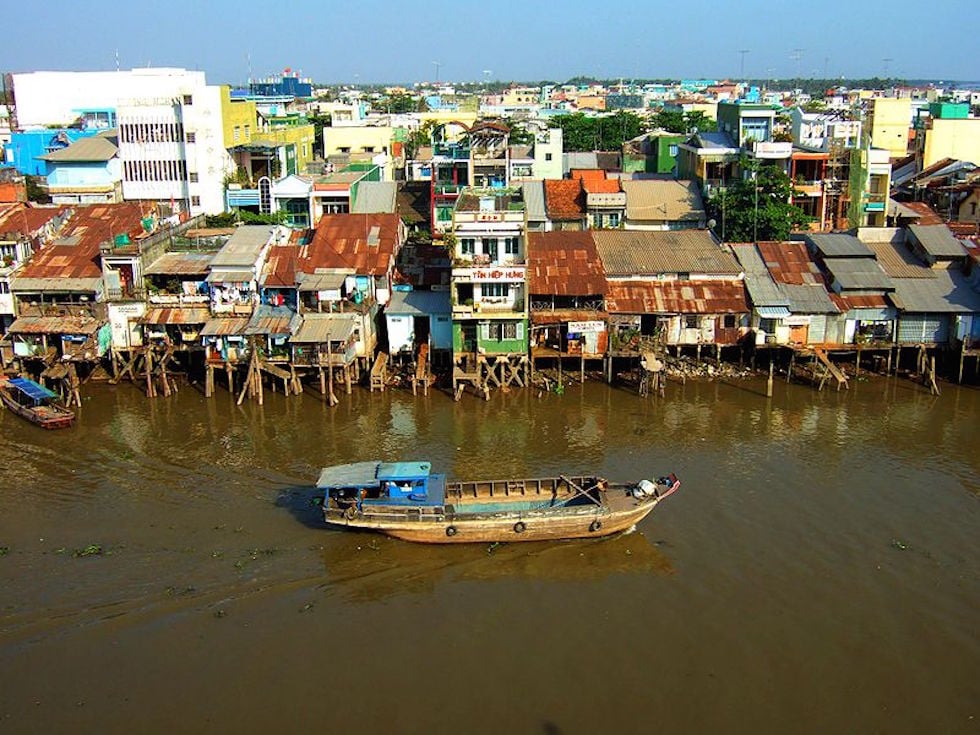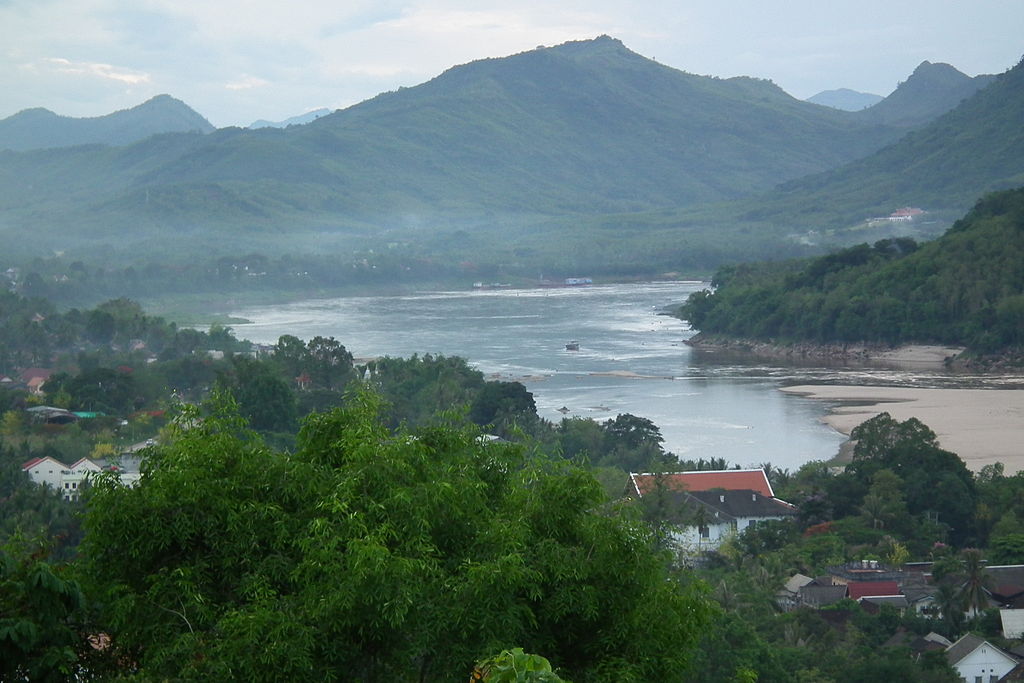China is more closely involved in cross-border cooperation on hydropower and water management after the six countries that share the Mekong River signed a landmark agreement late last year.
While more needs to be done between these countries to resolve disputes and encourage transparency over dam building and shared water management, the agreement signals a greater willingness to discuss areas of discord that have soured relations in the region in the past.
During their meeting in in China’s southern province of Yunnan in November 2015, the foreign ministers of China, Myanmar, Laos, Thailand, Cambodia, and Vietnam launched the Lancang-Mekong Cooperation Mechanism (LMCM), an initiative pitched at the November 2014 Summit Meeting between China and the Association of Southeast Asian Nations (ASEAN) in Naypyidaw, Myanmar.
According to Wang Yi, the Chinese foreign minister, the new mechanism will cover five priority areas: interconnectivity, production capacity, cross-border economic cooperation, water resources and cooperation on agriculture and poverty reduction.
The new mechanism’s purview is much broader than other initiatives, such as the Greater Mekong Subregion (GMS), which has the same membership.
Most striking is the inclusion of cooperation on water resources, an issue which has been far outside the remit of the GMS.
In the past, where water resources have been the focus of cooperation – primarily through the Mekong River Commission (MRC) – China has been reluctant to become a member (although it has been a dialogue partner).
China is the upstream and most powerful country in many transboundary river basins. It has therefore been called an ‘upstream superpower’. In the Mekong and elsewhere, China has so far been disinclined to sign water treaties or set up river basin organisations.
While the new Mekong cooperation mechanism remains far from being a river basin organisation, it is notable that China has now been a driver behind an initiative which explicitly includes water issues within its remit.
So what conclusions can we draw from this development?
Most importantly, this reflects the increasing importance and urgency Chinese leaders’ attach to hydropower and politics. As Yu Xuezhong, a senior Chinese hydro-environmental scientist, has noted, water in the Mekong region is seen as “the most basic resource and also a national strategic resource with crucial implications”.
Water-related issues therefore have mounting potential to derail China’s ‘good-neighbourly diplomacy’.
Mainland Southeast Asia is China’s strategic and economic backyard and a key testing ground for China’s ‘peaceful development’ approach as well as its ‘One Belt, One Road’ initiative.
With the exception of Vietnam, the Mekong countries have been strong advocates of China’s growing role in regional affairs. This is in sharp contrast to many countries of maritime Southeast Asia, which accuse China of encroachment in the South China Sea.
Yet the Mekong has also caused trouble for China’s government in recent years.
As China has decided unilaterally to construct several large-scale dams on the river’s mainstream, many people in downstream countries have complained about negative environmental impacts, as well as risks to food security and the livelihoods of some 60 million people living in the basin.
In August 2008, a flood in the northern parts of Laos and Thailand was linked by some to China’s Jinghong dam on the river in Yunnan, which had begun to generate hydropower earlier that summer.
In early 2010, China was confronted with unparalleled criticism of its dam building after record low water levels in the Mekong led to smaller fish catches, less water for irrigated agriculture, livestock and drinking and suspended river transportation affecting trade and tourism. The media and NGOs blamed the operators of the large reservoir behind China’s Xiaowan dam for aggravating severe drought conditions at the time.
As a result, China had to switch to a mode of diplomatic ‘damage control’in order to calm the waves. China took unprecedented steps by sharing dry season hydrological data from two of its mainstream dams (Manwan and Jinghong) during the crisis and invited Mekong country representatives to visit the Jinghong dam for a tour of inspection.
Since then, criticism has shifted to dam-building projects in Laos on the Mekong mainstream. However, China remains well aware that its own schemes are under increasing scrutiny – not least because Chinese companies are heavily involved in downstream dam-building plans.
Dams on the mainstream of the Mekong (Source: International Rivers)
What is more, China’s leaders realise that their strategic and economic backyard has become increasingly contested. In particular, the US has established its own sub-regional cooperation mechanism, the Lower Mekong Initiative (LMI), in 2009. While the impact of the initiative has been small in the Mekong, it has raised concerns in Beijing, where it is seen as part of a broader US strategy to limit Chinese influence in the region.
Against this background, by establishing close cooperation with the five other Mekong countries, China intends to play a more active and positive role in water resources management and cooperation in the Mekong region more generally.
In doing so, China hopes to shape the rules of cooperation and make sure that external actors are excluded. Tellingly, Wang Yi has referred to the LMCM as the ‘baby’ of the six countries.
Zhang Jiuhuan, vice chairman of the China Public Diplomacy Association and a former Chinese ambassador to Thailand, said that downstream countries “concerned about the implications of the dam construction upstream…could raise the issue for consultation with countries upstream”. At the same time, however, Wang Yi has made clear that the LMCM should generally “discuss easy issues first” and evolve in a gradual and project-driven manner.
There are some tangible benefits that could enhance much-needed transparency and trust over water issues in the region. While the following suggestions are my own, the importance of increasing transparency and trust is also acknowledged by many Chinese experts and resonates with downstream countries:
First, China should revise its data sharing policy. It remains hard to understand why dry season hydrological data and sediment load are regarded as state secrets linked to China’s national security. In fact, such data would be very beneficial for downstream countries in various ways, including improving adaptability to possible short-term changes in water flow volumes.
Second, as dam building will most likely continue, China should embark upon a strategy of prior notification and conduct impartial environmental impact assessments and follow up on their findings.
Third, in the long run China and its riparian neighbours should negotiate common and equitable rules of water resources management, which reflect their respective geographical positions (but not necessarily their respective power capabilities), which can one day lead to the inking of binding water treaties.
If these steps materialise under the umbrella of the new mechanism, this would indeed mark a new, and positive, chapter in China’s international hydro-politics.
Image: Dams on the Mekong have been a source of tension between China and countries downstream (Image by Daniel Berthold)






